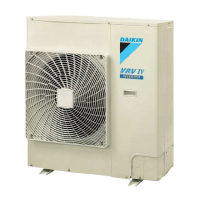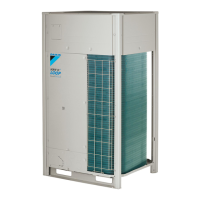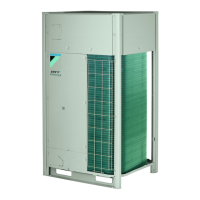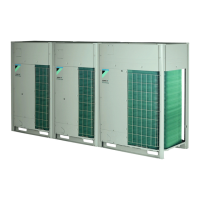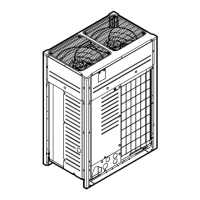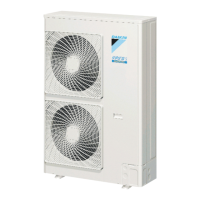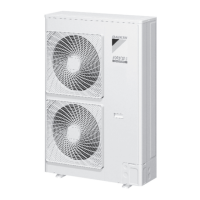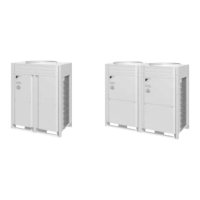Do you have a question about the Daikin VRV IV S Series and is the answer not in the manual?
Details the manual's purpose, content, and audience.
Information about the outdoor unit, including accessories and transportation stay.
Steps to remove accessories from the outdoor unit.
Instructions for removing the transportation stay.
Describes the VRV IV-S heat pump outdoor unit features and applications.
Illustrates the system configuration with various indoor units and components.
Guidelines for selecting and preparing the installation location.
Requirements and selection criteria for refrigerant piping materials and sizes.
Guide to selecting appropriate piping sizes based on capacity and type.
Instructions for selecting refrigerant branch kits based on unit capacity.
Steps to open the outdoor unit for installation access.
Procedures for physically mounting the outdoor unit, including structure and drainage.
Detailed steps for connecting refrigerant pipes, including stop valves and service ports.
Procedures for leak testing and vacuum drying of the refrigerant piping.
Guidelines for insulating refrigerant piping to prevent condensation and heat loss.
Instructions for charging refrigerant, including precautions and calculating amounts.
Steps for field wiring, including power supply and transmission wiring.
Final steps for completing the outdoor unit installation.
Guide to configuring system settings via push buttons or PC.
Overview of field settings and configuration methods.
Instructions on how to access setting components.
Identifies components used for field settings.
Guide to accessing monitoring and setting modes.
How to read information in monitoring mode.
How to change field settings in mode 2.
Details on reading system status in mode 1.
Detailed explanation of specific field settings for configuration.
Instructions for connecting a PC for system configuration.
Safety precautions before performing commissioning.
Checklist of items to verify before starting commissioning.
Steps and checks to perform during the commissioning process.
Explanation of the system test run procedure.
Procedure for performing a test run using 7-LEDs display.
Procedure for performing a test run using 7-segments display.
Steps to correct issues after an abnormal test run completion.
Instructions for operating the unit after installation and testing.
Guide to resolving issues using error codes.
An overview and table of common error codes and their causes/solutions.
Recommended clearance and spacing for outdoor unit installation.
Diagrams illustrating the outdoor unit's piping connections.
Diagrams illustrating the outdoor unit's electrical wiring.
Overview of how the system components are interconnected.
Recommended temperature and humidity ranges for operation.
General procedures for operating the system, including cooling, heating, and fan modes.
Instructions for using the dry mode to reduce humidity.
How to adjust the air flow direction of indoor units.
Procedures for designating a master user interface for system control.
Explains the role of the master user interface.
Steps to designate the master unit for VRV DX systems.
Steps to designate the master unit for RA DX systems.
Information about the refrigerant type and GWP.
Information on warranty periods and recommended maintenance.
Guide to resolving issues using error codes.
An overview and table of common error codes and their causes/solutions.
Describes normal operating symptoms that might be mistaken for malfunctions.
